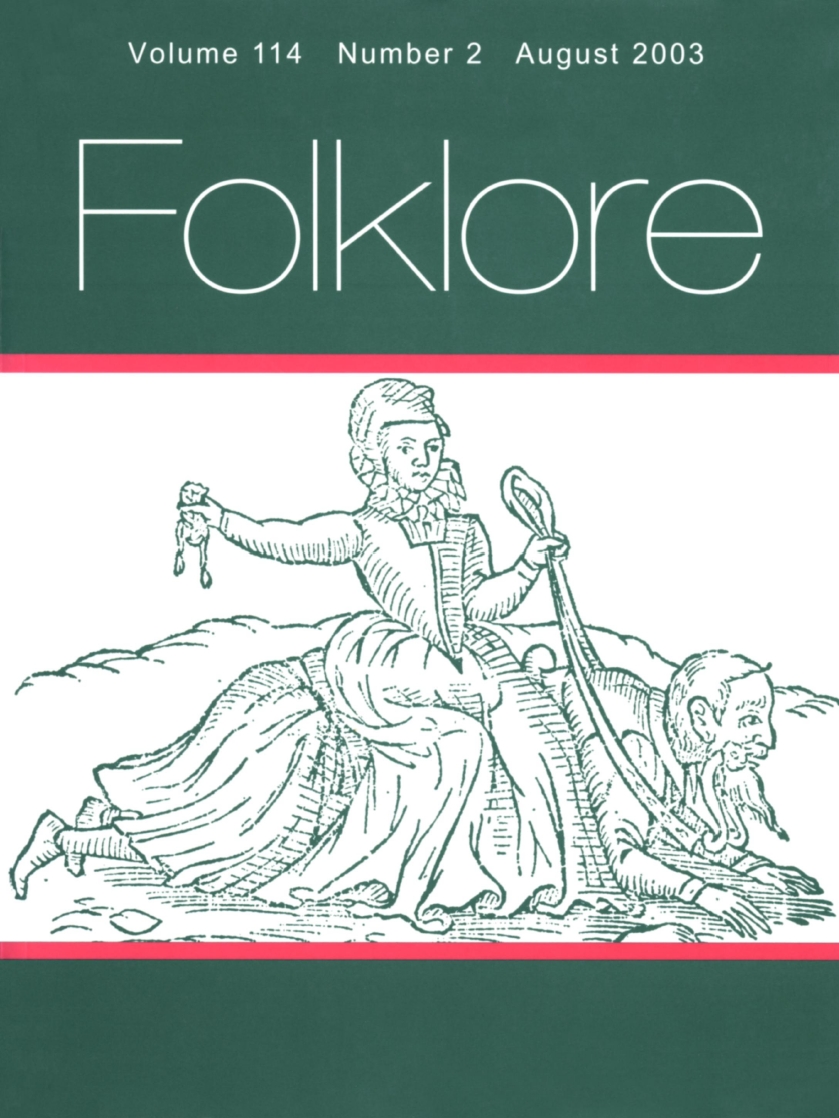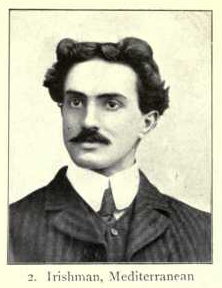|
David MacRitchie
David MacRitchie (16 April 1851 – 14 January 1925) was a Scottish folklorist and antiquarian. He proposed that stories of fairies originated with an aboriginal race that occupied the British Isles before Celts and other groups arrived. Early life David MacRitchie was the younger son of William Dawson MacRitchie and Elizabeth Elder MacRitchie. He was born in Edinburgh and attended the Edinburgh Southern Academy, the Edinburgh Institute and the University of Edinburgh. He did not gain a degree but qualified as a Chartered Accountant. His father had been a surgeon in the East India Company. Career as folklorist In 1888 MacRitchie founded the Gypsy Lore Society to study the history and lore of Gypsies. He was also a member of several folklore societies. In 1914 he joined the Council of the Society of Antiquaries of Scotland, serving as vice-president from 1917 – 1920. He was noted for his interest in archaeology, being appointed as a trustee for Lord Abercromby's endowment ... [...More Info...] [...Related Items...] OR: [Wikipedia] [Google] [Baidu] |
Folkloristics
Folklore studies, less often known as folkloristics, and occasionally tradition studies or folk life studies in the United Kingdom, is the branch of anthropology devoted to the study of folklore. This term, along with its synonyms, gained currency in the 1950s to distinguish the academic study of traditional culture from the folklore artifacts themselves. It became established as a field across both Europe and North America, coordinating with ''Volkskunde'' (German), ''folkeminner'' (Norwegian), and ''folkminnen'' (Swedish), among others. Overview The importance of folklore and folklore studies was recognized globally in 1982 in the UNESCO document "Recommendation on the Safeguarding of Traditional Culture and Folklore". UNESCO again in 2003 published a Convention for the Safeguarding of the Intangible Cultural Heritage. Parallel to these global statements, the American Folklife Preservation Act (P.L. 94-201), passed by the United States Congress in conjunction with the Bicenten ... [...More Info...] [...Related Items...] OR: [Wikipedia] [Google] [Baidu] |
John Francis Campbell
John Francis Campbell (Scottish Gaelic: Iain Frangan Caimbeul; Islay, 29 December 1821 – Cannes, 17 February 1885), also known as Young John of Islay (Scottish Gaelic: Iain Òg Ìle) was a Scottish author and scholar who specialised in Celtic studies, considered an authority on the subject. Early life John Francis Campbell was born on Islay on 29 December 1821 to Lady Eleanor Charteris (1796–1832), eldest daughter of Francis Wemyss Charteris Douglas, and Walter Frederick Campbell of Islay (1798–1855), MP for Argyll. Campbell was a descendant (great-great-great-grandson) of Daniel Campbell of Shawfield who had bought Islay from the Campells of Cawdor, for £12,000 in 1726. Campbell was his father's heir, but creditors forced the island of Islay into administration, and the family left in 1847. After his father's death he was known as Campbell of Islay, even though the island had by then been sold. Education and early career Campbell was educated at Eton and ... [...More Info...] [...Related Items...] OR: [Wikipedia] [Google] [Baidu] |
Mediterranean Race
The Mediterranean race (also Mediterranid race) was a historical race concept that was a sub-race of the Caucasian race as categorised by anthropologists in the late 19th to mid-20th centuries. According to various definitions, it was said to be prevalent in the Mediterranean Basin and areas near the Mediterranean, especially in Southern Europe, North Africa, most of Western Asia, the Middle East or Near East; western Central Asia, parts of South Asia, and parts of the Horn of Africa. To a lesser extent, certain populations of people in Ireland, western parts of Great Britain, and Southern Germany, despite living far from the Mediterranean, were thought to have some minority Mediterranean elements in their population, such as Bavaria, Wales, and Cornwall.The Races of Europe by Carlton Stevens Coon. From Chapter XI: The Mediterranean World – Introduction: "The next strip to follow, in a geographical sense, would be the whole highland belt of central Europe stretching over to the ... [...More Info...] [...Related Items...] OR: [Wikipedia] [Google] [Baidu] |
Eskimos
Eskimo () is an exonym used to refer to two closely related Indigenous peoples: the Inuit (including the Alaska Native Iñupiat, the Greenlandic Inuit, and the Canadian Inuit) and the Yupik (or Yuit) of eastern Siberia and Alaska. A related third group, the Aleut, which inhabit the Aleutian Islands, are generally excluded from the definition of Eskimo. The three groups share a relatively recent common ancestor, and speak related languages belonging to the Eskaleut language family. These circumpolar peoples have traditionally inhabited the Arctic and subarctic regions from eastern Siberia (Russia) to Alaska (United States), Northern Canada, Nunavik, Nunatsiavut, and Greenland. Many Inuit, Yupik, Aleut, and other individuals consider the term ''Eskimo'', which is of a disputed etymology, to be unacceptable and even pejorative. Eskimo continues to be used within a historical, linguistic, archaeological, and cultural context. The governments in Canada and the United States have mad ... [...More Info...] [...Related Items...] OR: [Wikipedia] [Google] [Baidu] |
Pygmies
In anthropology, pygmy peoples are ethnic groups whose average height is unusually short. The term pygmyism is used to describe the phenotype of endemic short stature (as opposed to disproportionate dwarfism occurring in isolated cases in a population) for populations in which adult men are on average less than tall. The term is primarily associated with the African Pygmies, the hunter-gatherers of the Congo Basin (comprising the Bambenga, Bambuti and Batwa). The terms "Asiatic Pygmies" and "Oceanian pygmies" have been used to describe the Negrito populations of Southeast Asia and Australo-Melanesian peoples of short stature. The Taron people of Myanmar are an exceptional case of a "pygmy" population of East Asian phenotype. Etymology The term ''pygmy'', as used to refer to diminutive people, derives from Greek πυγμαῖος ''pygmaios'' via Latin ''Pygmaei'' (sing. ''Pygmaeus''), derived from πυγμή – meaning a short forearm cubit, or a measure of length corres ... [...More Info...] [...Related Items...] OR: [Wikipedia] [Google] [Baidu] |
James Hastings
James Hastings (26 March 1852 – 15 October 1922) was a Scottish United Free Church minister and biblical scholar. He is best known for producing major reference works, including a 5-volume '' Dictionary of the Bible'' and a 13-volume ''Encyclopædia of Religion and Ethics'', and establishing The ''Expository Times.'' Life He was born in Huntly, Aberdeenshire, the second son and fifth child of local miller James Hastings. His initial education was undertaken at Huntly School and Aberdeen Grammar School. He studied classics at the University of Aberdeen, graduating with a Master's degree in 1876. He then attended the Free Church Divinity College in Aberdeen in preparation for ordination as a Free Church minister. While studying at the college, he also worked as a teacher at Chanonry House School, a private school for boys in Old Aberdeen. Following a period as assistant minister in Broughty Ferry, Dundee, Hastings was ordained in 1884, becoming minister at Kineff Free Chur ... [...More Info...] [...Related Items...] OR: [Wikipedia] [Google] [Baidu] |
Euhemerism
Euhemerism () is an approach to the interpretation of mythology in which mythological accounts are presumed to have originated from real historical events or personages. Euhemerism supposes that historical accounts become myths as they are exaggerated in the retelling, accumulating elaborations and alterations that reflect cultural mores. It was named for the Greek mythographer Euhemerus, who lived in the late 4th century BC. In the more recent literature of myth, such as ''Bulfinch's Mythology'', euhemerism is termed the "historical theory" of mythology. Euhemerus was not the first to attempt to rationalize mythology in historical terms: euhemeristic views are found in earlier writings including those of Sanchuniathon, Xenophanes, Herodotus, Hecataeus of Abdera and Ephorus. However, the enduring influence of Euhemerus upon later thinkers such as the classical poet Ennius (b. 239 BC) and modern author Antoine Banier (b. 1673 AD) identified him as the traditional founder of this s ... [...More Info...] [...Related Items...] OR: [Wikipedia] [Google] [Baidu] |
Folklore
Folklore is shared by a particular group of people; it encompasses the traditions common to that culture, subculture or group. This includes oral traditions such as tales, legends, proverbs and jokes. They include material culture, ranging from traditional building styles common to the group. Folklore also includes customary lore, taking actions for folk beliefs, the forms and rituals of celebrations such as Christmas and weddings, folk dances and initiation rites. Each one of these, either singly or in combination, is considered a folklore artifact or traditional cultural expression. Just as essential as the form, folklore also encompasses the transmission of these artifacts from one region to another or from one generation to the next. Folklore is not something one can typically gain in a formal school curriculum or study in the fine arts. Instead, these traditions are passed along informally from one individual to another either through verbal instruction or demonstr ... [...More Info...] [...Related Items...] OR: [Wikipedia] [Google] [Baidu] |
Ainu From The Testimony Of Tradition (1890)
Ainu or Aynu may refer to: *Ainu people, an East Asian ethnic group of Japan and the Russian Far East *Ainu languages, a family of languages **Ainu language of Hokkaido **Kuril Ainu language, extinct language of the Kuril Islands **Sakhalin Ainu language, extinct language from the island of Sakhalin *Ainu music *Ainu cuisine *Ainu (Middle-earth), spirit in J. R. R. Tolkien's legendarium *Ainu (insect), a beetle in the family Tenebrionidae *Äynu people, of Western China **Äynu language See also * Äynu (other) *Ainur (other) *Aino (other) Aino may refer to: * Aino (given name), a first name in Finland and Estonia * Ainu people (sometimes called ''Aino''), an ethnic group of northern Japan * Ainu language (also sometimes called ''Aino''), the language of the Ainu people * Aino, Naga ... {{disambiguation Language and nationality disambiguation pages ... [...More Info...] [...Related Items...] OR: [Wikipedia] [Google] [Baidu] |
Edward Burnett Tylor
Sir Edward Burnett Tylor (2 October 18322 January 1917) was an English anthropologist, and professor of anthropology. Tylor's ideas typify 19th-century cultural evolutionism. In his works '' Primitive Culture'' (1871) and ''Anthropology'' (1881), he defined the context of the scientific study of anthropology, based on the evolutionary theories of Charles Lyell. He believed that there was a functional basis for the development of society and religion, which he determined was universal. Tylor maintained that all societies passed through three basic stages of development: from savagery, through barbarism to civilization. Tylor is a founding figure of the science of social anthropology, and his scholarly works helped to build the discipline of anthropology in the nineteenth century.Paul Bohannan, ''Social Anthropology'' (New York: Holt, Rinehart & Winston, 1969) He believed that "research into the history and prehistory of man ..could be used as a basis for the reform of Br ... [...More Info...] [...Related Items...] OR: [Wikipedia] [Google] [Baidu] |
Letters On Demonology And Witchcraft
''Letters on Demonology and Witchcraft Addressed to J. G. Lockhart, Esq.'' (1830) was a study of witchcraft and the supernatural by Sir Walter Scott. A lifelong student of folklore, Scott was able to draw on a wide-ranging collection of primary and secondary sources. His book found many readers throughout the 19th century, and exercised a significant influence in promoting the Victorian vogue for Gothic and ghostly fiction. Though on first publication it met with mixed reviews, it is now recognised as a pioneering work of scientific anthropology, treating of its subject in an acute and analytical way which prefigures later scholarship on the subject, as well as presenting a highly readable collection of supernatural anecdotes. Content The book is divided into ten parts, each taking the form of a letter from the author to his son-in-law, J. G. Lockhart. This format allows Scott to write in an informal, discursive manner, enhancing the book's readability. He presents a wi ... [...More Info...] [...Related Items...] OR: [Wikipedia] [Google] [Baidu] |







